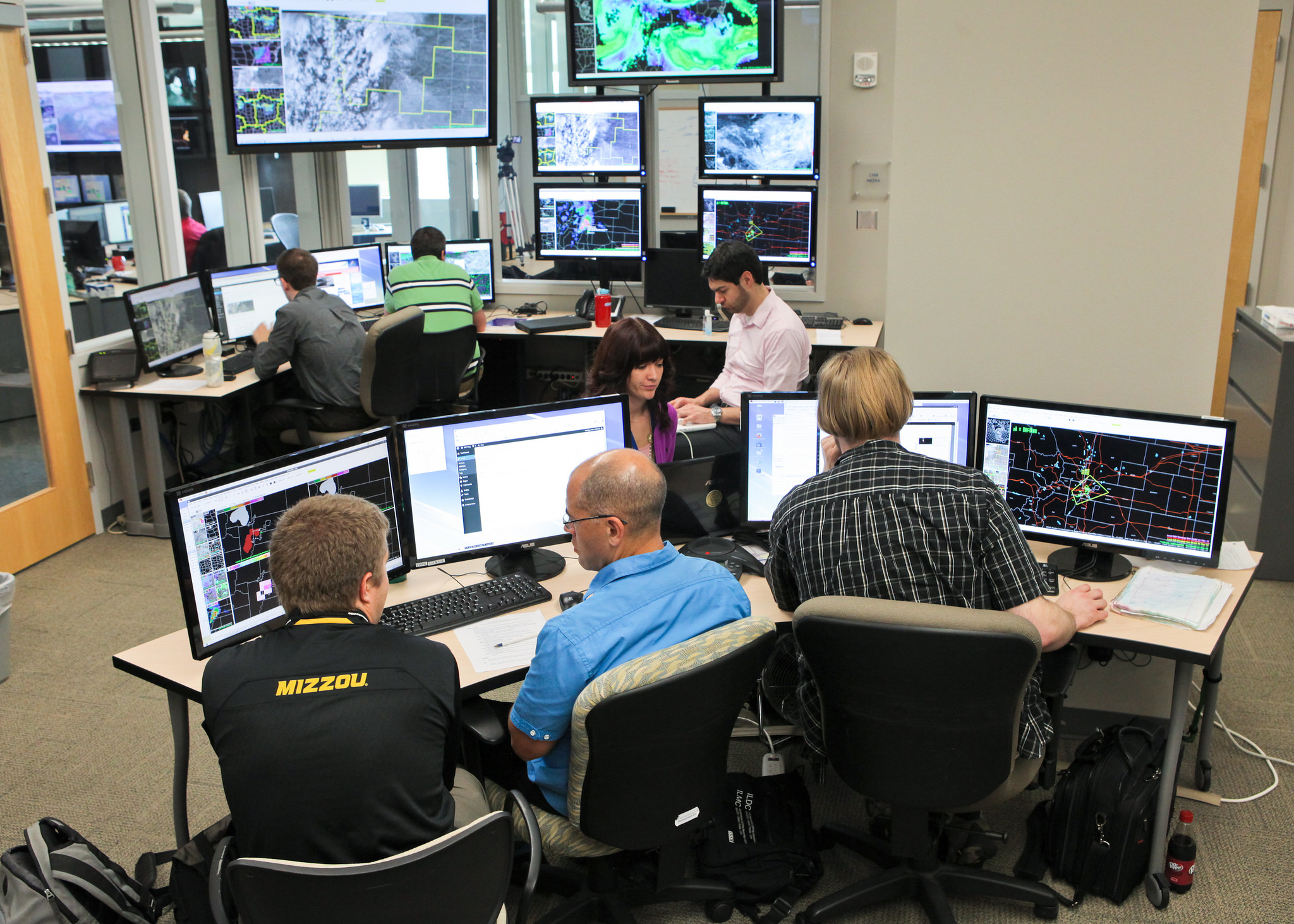The NOAA Hazardous Weather Testbed (HWT) Experimental Warning Program (EWP) is conducted its 2009 Spring Experiment at the National Weather Center (NWC) in Norman, Oklahoma for six weeks this past Spring. The testbed is a joint project of the National Weather Service (NWS) and the National Severe Storms Laboratory (NSSL) and provides a conceptual framework as well as a physical space to foster collaboration between research and operations to test and evaluate emerging technologies and science for WFO severe convective weather warning operations.
Four primary projects were geared toward National Weather Service Forecast Office warning decision-making applications:
- An evaluation of experimental multiple-radar/sensor gridded severe weather algorithm products using the NSSL Warning Decision Support System II (WDSSII);
- An evaluation of the 3D Lightning Mapping Arrays (LMA) in Central Oklahoma, Northern Alabama, the DC Metro Area, and possibly East-Central Florida;
- An evaluation of networked 3-cm radars (CASA) in Central Oklahoma;
- An evaluation the phased array radar (PAR) in Norman, Oklahoma.
The participants were active in the LMA, CASA, and PAR experiments when severe weather was affecting those domains. The WDSSII multi-radar/sensor algorithm experiment was less dependent on local weather since researchers can access the needed radar and other data sets remotely for nearly anywhere in the United States.
For each experiment, two to four forecasters per week from the NWS and other institutions evaluated the accuracy and operational utility of each new technology for severe weather decision-making through real time warning situations and structured experiments with archived data. They worked afternoon/evening shifts (M-Th), beginning with a daily coordination briefing, orientation training on Mondays, and a mixture of archived event playback analysis and intensive operations periods (IOP’s) using live data. During data evaluation, the forecasters worked with scientists in charge of each application to provide feedback. On Fridays, researchers conducted a two-hour end-of-week debriefing, followed by short forecaster seminars. The EWP blog contained the daily outlook, the daily and weekly summaries, and live updates during real-time events. For more information about the EWP, see: http://ewp.nssl.noaa.gov/.


